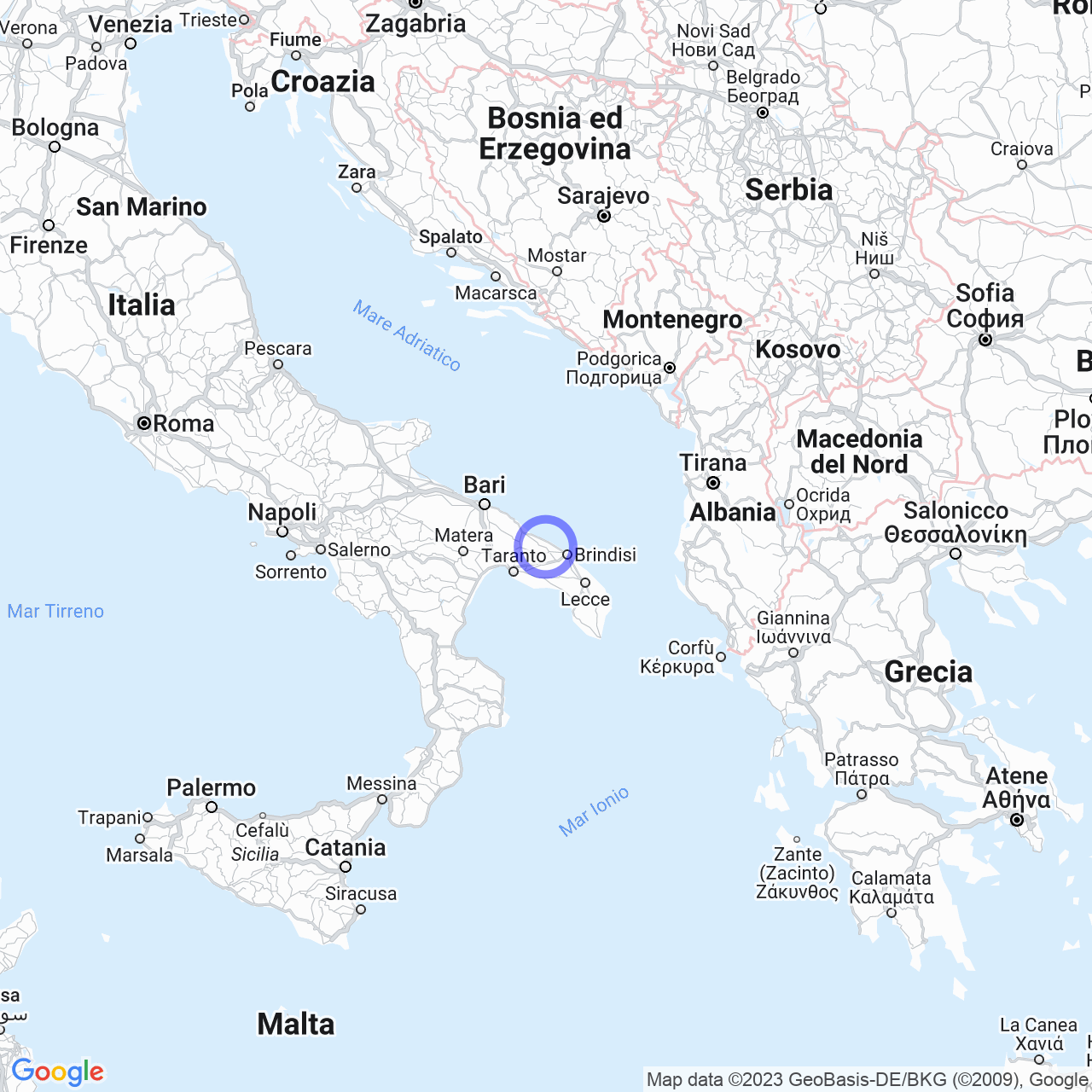Carovigno
Welcome to Carovigno, among hills full of olive trees and crystal-clear sea
Welcome to Carovigno, a small town in Puglia located on the southeastern Murgia, a few kilometers from the Adriatic coast. With its 16,770 inhabitants, Carovigno is a center for olive oil production, with a territory rich in centuries-old olive groves and almond trees. But what truly characterizes the town? Let's discover it together!
Physical geography: territory and climate
The municipality's territory extends for 105 km² on the hills of the Alto Salento, adjacent to the northeast and north with the Adriatic Sea, to the west with Ostuni, to the south with San Vito dei Normanni and to the southeast with Brindisi. The inhabited core occupies 144 hectares and the territory is 20% flat and 80% hilly, characterized by the presence of olive groves and vineyards used for wine production. The extension of Mediterranean vegetation is limited.
The climate of Carovigno is typically Mediterranean, with mild winters and long, hot summers. The reference meteorological station is located in Casamassima. The coldest months are January and February, with sporadic snow episodes. All other months are characterized by average temperatures ranging from 13°C to 30°C, with rare precipitations.

Origins of the name
Various hypotheses have been put forward about the name of the city. The first one argues that it derives from the Messapic term ''Karp'', which indicates the hill on which the fortified city was built. A second hypothesis, instead, traces the name back to ''Καρα'' (Caput) and ''οινος'' (vinum), that is ''Capovino''.
The history of Carovigno
Carovigno boasts an ancient history, dating back to the Messapic period (8th-5th century BC). Over the centuries, the city underwent various dominations, including Roman and Byzantine, before passing under Norman control. In 1210, in fact, Frederick II of Swabia donated the city to his son Henry, later Henry of Ireland, who fortified it. In 1463 Carovigno passed to the counts Acquaviva, who ruled it until the Unification of Italy.
What to see in Carovigno
Carovigno is a charming town, with a pleasant historic center characterized by stone houses, arches, alleys and courtyards. Among the main attractions of Carovigno we find the Dentice di Frasso Castle, the Matrice Church of Santa Maria Assunta, the Church of San Giovanni Battista and the Church of San Nicola di Mira. Also worth visiting is the Santa Sabina Tower, built in the 16th century to protect the territory from Turkish raids.
Typical cuisine and local products
Carovigno is a center for olive oil production and the protagonist of local cuisine. The green gold of the city is used to prepare numerous dishes, including the typical puccia, a Puglian bread stuffed with cold cuts, cheese and other delicacies. Among the dishes to try, baked pasta with meatballs, fried panzerotti and tarantina-style mashed potatoes, with tomato, garlic and chili. Among the desserts, not to be missed are the cartellate, favette and sagne ‘ncannulate.
The crystal-clear sea of Carovigno
A few kilometers from the historic center of Carovigno are some of the most beautiful beaches in the region. Among these stands out the Torre Guaceto State Natural Reserve, a protected area of 1,200 hectares located in the territory of the municipality. Here it is possible to admire beaches with crystal-clear water, breathtaking cliffs and numerous species of Mediterranean flora and fauna. Also worth a visit is the beach of Torre Santa Sabina, especially for its golden sand and clear waters.
We await you in Carovigno to discover all the treasures of the city, among sea and hills rich in centuries-old olive trees.
